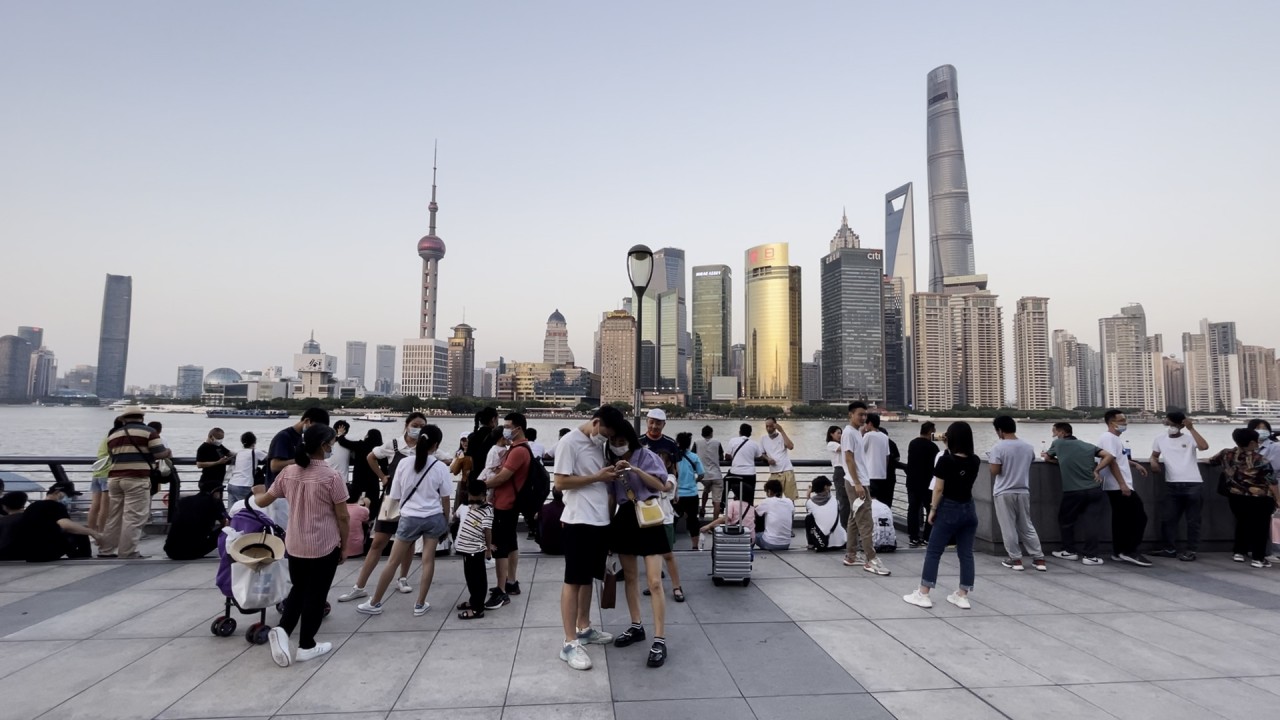
Shanghai to start cruise service on once polluted Suzhou Creek to boost tourism, overcome Covid setbacks
- Twenty passengers at a time will be able to enjoy a two-hour, 17-kilometre ride through the heart of the metropolis starting in November
- The service comes following a US$5.5 billion rehabilitation project that cleaned up the tributary to the Huangpu River
Twenty passengers at a time will be able to enjoy a 17-kilometre ride starting in November, enjoying views of hundreds of modern high-rises, busy shopping areas, historic spots and entertainment venues as the river winds its way through the heart of the metropolis.
It will be the first fee-based cruise service on the creek in history, thanks to the local government’s 40 billion yuan (US$5.5 billion) rehabilitation project.
“Shanghai abounds with tourism resources which appeal to local tourists,” said Zhang Qi, deputy director of Shanghai Administration of Culture and Tourism. “The cruise service will have a synergy with existing popular tourist destinations such as Shanghai Disneyland and Haichang Ocean Park.”
Trial operations kicked off in September. Ticket prices for a two-hour ride, on ships measuring 14.8 metres long and 4 metres wide, have yet to be decided. Zhang would not reveal details about the annual capacity of the service.
Suzhou Creek, also known as Wusong River, was synonymous with Shanghai more than a century ago. Deemed a birthplace of China’s manufacturing industry, it flows to Huangpu River, the last significant tributary of the Yangtze River before the Yangtze empties into the East China Sea.
In 1998, the municipal government launched a clean-up campaign to eradicate pollution. Sewage was diverted away and a pumping station was built to flush the creek. Local authorities also built a water treatment plant with a capacity of 400,000 cubic metres a day to make the creek friendly to aquatic life.
Beijing mayor in ‘surprise’ promotion to top job in Shanghai
Shanghai’s economy suffered this year when a Covid-19 lockdown in April and May caused huge losses in production and commerce. The city’s gross domestic product contracted by an unprecedented 5.7 per cent in the first six months of the year.
The municipal government has yet to unveil economic performance for the third quarter, but has said that local GDP for the first nine months shrank by 1.4 per cent from a year ago.
Swire Properties partners with CTG Duty Free on retail project in Hainan
The city’s tourism sector raked in total revenue of 533 billion yuan in 2019, an increase of 8 per cent from a year earlier, official data showed. Since the outbreak in early 2020, China’s tourism sector was among the biggest casualties, as Beijing’s zero-Covid policy limited people’s movement.
“The travel industry remains an important driver for economic growth for Shanghai,” said Li Wenjie, chief executive of Shanghai Yaheng International Travel. “It will not become a true elite city if Shanghai cannot draw tourists from around the world when the coronavirus is fully contained in the future.”


